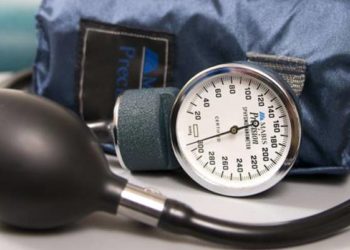Poor baseline lung function associated with increased risk of incident tuberculosis
1. The risk of tuberculosis (TB) was higher in individuals with obstructive or restrictive lung function impairment compared to those with normal lung function.
2. TB incidence was inversely correlated with forced expiratory volume in 1 second.
Evidence Rating Level: 2 (Good)
Tuberculosis (TB) is a leading infectious disease, ranking among the top 10 causes of death globally. While it is known that lung function decreases after pulmonary TB infection, the association between baseline lung function and risk of incident TB is unclear. This study thus investigated the relationship between baseline lung function and TB development among the general population. This nationwide population-based cohort study used data from the Korea National Health and Nutrition Examination Survey (NHIS) between 2010 and 2016 and included 16,594 participants aged >40 years with spirometry results and no history of TB. Spirometry measurements included forced expiratory volume in 1 second (FEV1), forced vital capacity (FVC), and the FEV1/FVC ratio. Spirometry outcomes were categorized into three groups based on predicted normal values: normal (FEV1/FVC ratio≥0.7 and FVC≥80% of predicted), restrictive (FEV1/FVC ratio≥0.7 and FVC<80% of predicted), and obstructive lung function (FEV1/FVC ratio<0.7). Among the 16,457 participants included in the study, 12,666 (77.0%) had normal lung function (mean age [SD] = 56.19 [9.97] years, female [%] = 7,796 [61.55%]), 1,587 (9.6%) had restrictive pattern (mean age [SD] = 61.18 [10.3], female [%] = 828 [52.17%]), and 2,204 (13.4%) had obstructive pattern (mean age [SD] = 65.97 [9.36], female [%] = 576 [26.13%]). During a median follow-up period of 5.5 years (interquartile range 3.5–7.5), 72 were newly diagnosed with TB. Compared to participants with normal lung function, TB risk was higher in participants with obstructive lung function impairment (adjusted hazard ratio (aHR): 2.03, 95% CI: 1.12–3.68) and restrictive lung function impairment (aHR: 2.19, 95% CI: 1.120–4.29). Low FEV1 was associated with increased TB risk (aHR [lowest quartile vs. highest quartile]: 1.91, 95% CI: 1.05–3.50; aHR [lowest decile vs. highest decile]: 2.76, 95% CI: 1.14–6.70; both p for trends<0.0001). Overall, this study found that individuals with lower lung function had an increased risk of TB, which may be inversely correlated with FEV1. Future prospective studies are needed to explore the mechanisms behind these findings.
Click to read the study in PLOSONE
Image: PD
©2025 2 Minute Medicine, Inc. All rights reserved. No works may be reproduced without expressed written consent from 2 Minute Medicine, Inc. Inquire about licensing here. No article should be construed as medical advice and is not intended as such by the authors or by 2 Minute Medicine, Inc.







